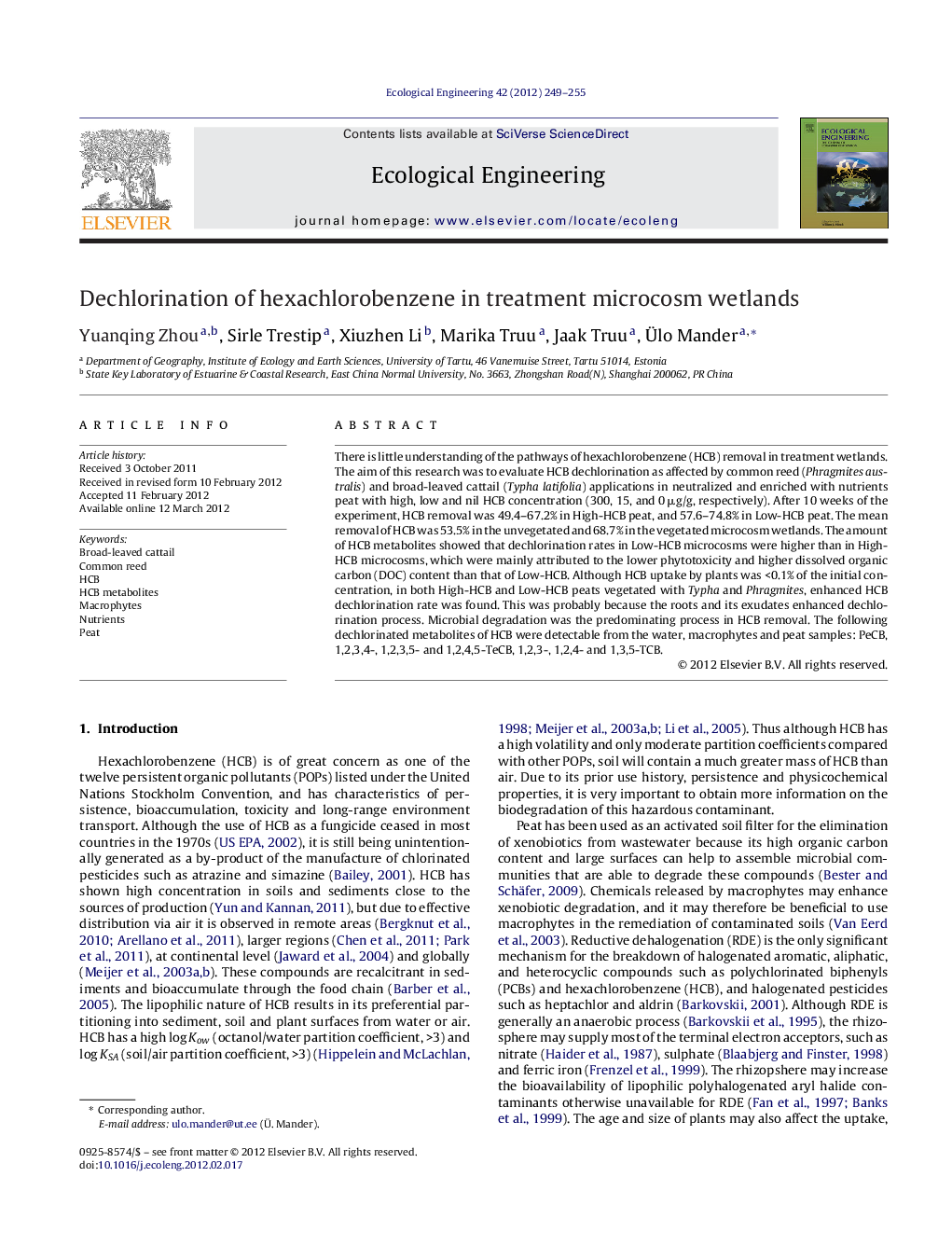| کد مقاله | کد نشریه | سال انتشار | مقاله انگلیسی | نسخه تمام متن |
|---|---|---|---|---|
| 6302798 | 1618056 | 2012 | 7 صفحه PDF | دانلود رایگان |
عنوان انگلیسی مقاله ISI
Dechlorination of hexachlorobenzene in treatment microcosm wetlands
دانلود مقاله + سفارش ترجمه
دانلود مقاله ISI انگلیسی
رایگان برای ایرانیان
کلمات کلیدی
موضوعات مرتبط
علوم زیستی و بیوفناوری
علوم کشاورزی و بیولوژیک
بوم شناسی، تکامل، رفتار و سامانه شناسی
پیش نمایش صفحه اول مقاله

چکیده انگلیسی
There is little understanding of the pathways of hexachlorobenzene (HCB) removal in treatment wetlands. The aim of this research was to evaluate HCB dechlorination as affected by common reed (Phragmites australis) and broad-leaved cattail (Typha latifolia) applications in neutralized and enriched with nutrients peat with high, low and nil HCB concentration (300, 15, and 0 μg/g, respectively). After 10 weeks of the experiment, HCB removal was 49.4-67.2% in High-HCB peat, and 57.6-74.8% in Low-HCB peat. The mean removal of HCB was 53.5% in the unvegetated and 68.7% in the vegetated microcosm wetlands. The amount of HCB metabolites showed that dechlorination rates in Low-HCB microcosms were higher than in High-HCB microcosms, which were mainly attributed to the lower phytotoxicity and higher dissolved organic carbon (DOC) content than that of Low-HCB. Although HCB uptake by plants was <0.1% of the initial concentration, in both High-HCB and Low-HCB peats vegetated with Typha and Phragmites, enhanced HCB dechlorination rate was found. This was probably because the roots and its exudates enhanced dechlorination process. Microbial degradation was the predominating process in HCB removal. The following dechlorinated metabolites of HCB were detectable from the water, macrophytes and peat samples: PeCB, 1,2,3,4-, 1,2,3,5- and 1,2,4,5-TeCB, 1,2,3-, 1,2,4- and 1,3,5-TCB.
ناشر
Database: Elsevier - ScienceDirect (ساینس دایرکت)
Journal: Ecological Engineering - Volume 42, May 2012, Pages 249-255
Journal: Ecological Engineering - Volume 42, May 2012, Pages 249-255
نویسندگان
Yuanqing Zhou, Sirle Trestip, Xiuzhen Li, Marika Truu, Jaak Truu, Ãlo Mander,